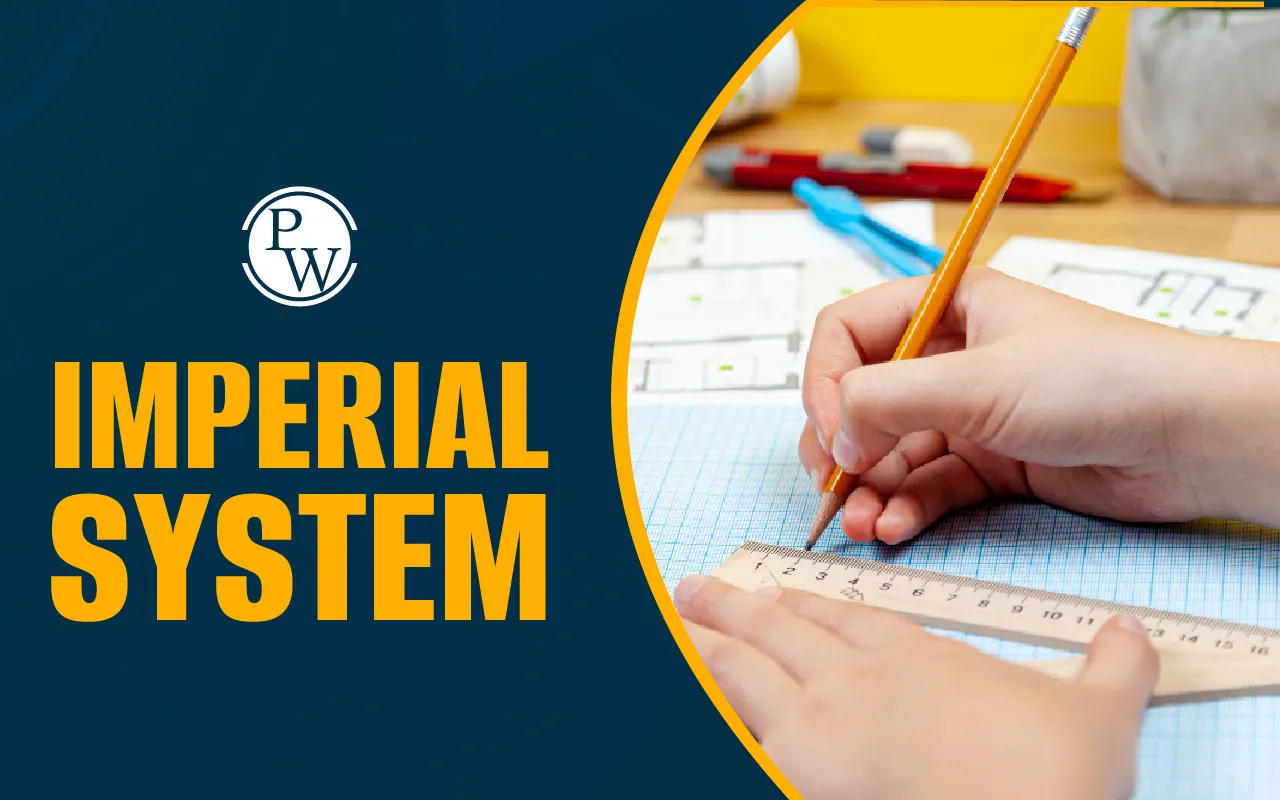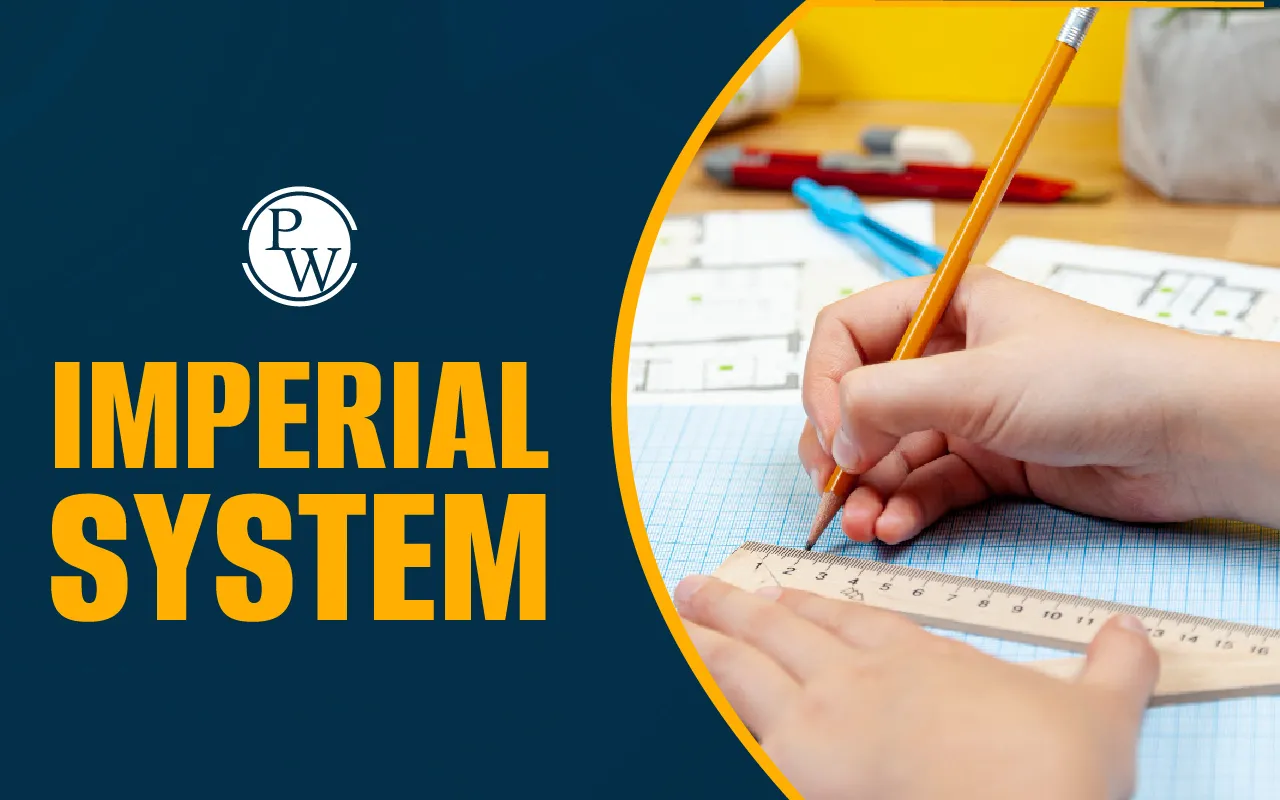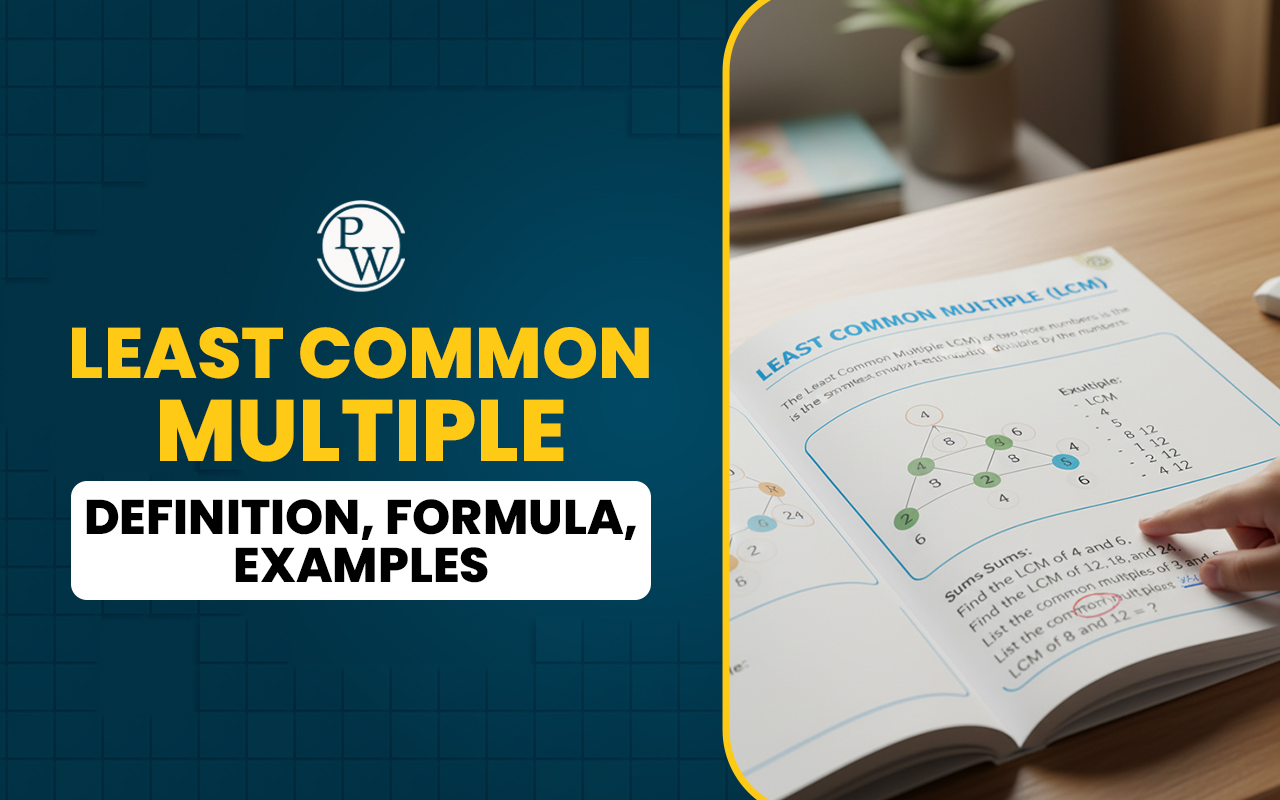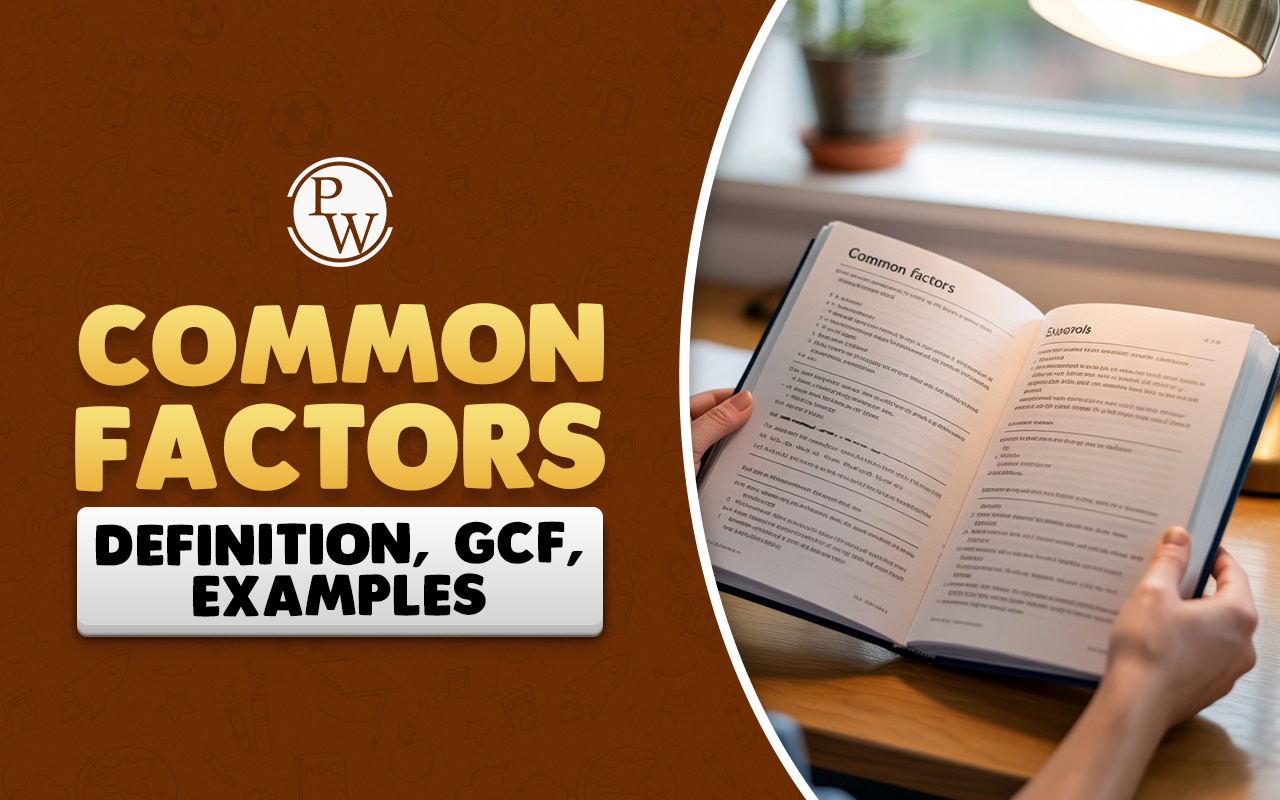

What is Imperial System?: Imperial system is a method of measurement that was mainly used in the United Kingdom and some other countries. It includes imperial units like inches, feet, and miles for length, pounds and gallons for weight and volume.
While the metric system is more common today, imperial measurements are still used in daily life in many places. To explore more about the imperial measurement system, its units, and how it differs from the metric system, keep reading.
Read More: Division of Fractions
What is Imperial System?
Imperial system is a traditional way of measuring length, weight, and volume using units like inches, feet, pounds, and gallons. This system became officially used in Britain after the Weights and Measures Act of 1824 and 1878.
-
Even today, countries like the United Kingdom continue to use imperial measurements in daily life for driving distances, cooking, shopping, and more.
-
Common imperial units include inch, foot, and yard (for length); pound (for weight); and gallon or pint (for volume).
-
This system is different from both the metric system and the U.S. customary system.
-
While countries like India follow the metric system more, the imperial measurement system is still part of learning in some countries.
Now that the basic concept of the imperial system is understood, let’s learn more about the different imperial units.
Read More: 30 Fun Maths Questions with Answers
Imperial Units
Imperial system uses different units to measure things like length, weight, volume, and area. These units are still commonly used in the United Kingdom for everyday tasks such as cooking, measuring height or weight, and traveling distances.
-
Length/Distance: Used to measure how long or far something is. Some common imperial units for length are inch (in), foot (ft), yard (yd), and mile (mi).
-
Weight/Mass: Used to measure how heavy something is. The imperial units for weight include .
-
Volume: Used to measure how much space a liquid takes up. Some common units for volume are fluid ounce
-
Area: Used to measure how much surface a space covers. Imperial units for area include
Metric Units of Measurement
The metric system is a measurement system based on the decimal system. It is used all over the world, especially in science and research. The main units in the metric system are meter for length, gram for weight (mass), and liter for capacity (volume).
In the metric system, units for length include are used.
Also Read: Types of Line in Math
Metric System vs Imperial System
The metric system and the imperial system are two different ways to measure things like length, weight, and volume. While many countries use the metric system because of its easy decimal-based units, some countries still use the imperial system with its own set of units.
Understanding the metric system vs imperial system differences, as outlined below, helps students learn when and where each system is used.
-
Imperial system is used mainly in countries like the United Kingdom, Liberia, and Myanmar. It uses units such as inch, pound, ton, foot, and gallon. These units do not follow a simple pattern for conversion.
-
For example, 1 foot has 12 inches, and 1 yard has 3 feet, so conversions can sometimes be confusing.
-
Metric system, on the other hand, is based on the decimal system. It uses units like meter, kilogram, and liter. The important feature of the metric system is that it works in multiples of 10.
-
For example, 1 meter equals 100 centimeters, and 1 kilometer equals 1000 meters. This makes converting between units easier and more straightforward.
-
Metric system is also called the SI system (Système International), which is used worldwide in science and in many countries for daily measurements.
-
Imperial system has been in use for a long time and is still common in everyday life in some countries, but the metric system is considered simpler and is used more in education, science, and international work.
Read More: Ratio and Proportion
Metric to Imperial System Conversion Chart – Why Do We Need it?
Most countries like India, China, and those in Europe, use the metric system for measurements. But countries like the United States still use the imperial system. In some countries, like the United Kingdom, both systems are used depending on the situation.
Because of this difference, it becomes important for students to understand how to convert between metric and imperial units. This is especially useful for those who study international books, solve global test papers, or dream of going to universities in countries like the USA.
A Metric to Imperial System Conversion Chart helps students quickly change one unit to another, like turning kilometers into miles or liters into gallons. Learning this saves time and avoids confusion while solving maths or science problems.
Hence, learning about the Imperial System and its units helps students understand different ways of measurement used around the world. It also improves their ability to convert between systems when needed.
Read More: Division of Fractions
Solved Imperial System Examples
Find some solved Imperial System examples here to understand how to convert and use the different imperial system units while solving maths problems:
Example 1. How many feet are there in 2 yards?
Solution: In the imperial system, 1 yard equals 3 feet.
So, 2 yards = 2 × 3 feet = 6 feet.
Answer: There are 6 feet in 2 yards.
Example 2. Convert 2 inches into centimeters.
Solution: We know 1 inch = 2.54 centimeters.
So, to convert 2 inches into centimeters: 2 inches = 2 × 2.54 cm = 5.08 cm
We also know 1 foot = 12 inches and 1 inch = 2.54 cm.
So, 1 foot = 12 × 2.54 cm = 30.48 cm.
Example 3: Convert 20 inches to feet.
Solution:
We know that 1 foot = 12 inches.
To convert inches to feet, divide the number of inches by 12.
20 inches = 20 ÷ 12 feet = 1.67 feet (approx.)
Answer: 20 inches is about 1.67 feet.
Example 4: Convert 5 cups to pints.
Solution: In the imperial system, 1 pint equals 2 cups. So, 1 cup is half a pint (0.5 pint).
To convert 5 cups to pints, multiply 5 by 0.5.
5 cups = 5 × 0.5 pints = 2.5 pints
Answer: 5 cups is equal to 2.5 pints.
Read More: How to Prepare for Math Olympiads with Mental Maths
Faster Calculations, Better Scores with CuriousJr Mental Math Classes
Is your child struggling with basic math because of slow calculations? Many children lose marks or feel less confident in math because they take too much time doing simple calculations.
CuriousJr’s Mental Math Online Classes are designed with an aim to teach fun and easy tricks to your child so that they can calculate faster mentally.
-
With live interactive sessions and two teacher models (one mentor for teaching and the other is for doubt-solving), your child gets the support they need to enjoy and improve in maths.
-
Homework help is also provided to support your child's overall learning.
-
Regular PTMs and performance tracking also make sure that you stay informed about your child's progress.
Book a demo class today and see how CuriousJr helps your child become quicker and more confident in maths.
Imperial System FAQs
Q.1. What does the imperial system mean?
Q.2. What are the imperial units?
Q.3. Why is learning the imperial measurement system important?
Q.4. How is the metric system different from the imperial system?













